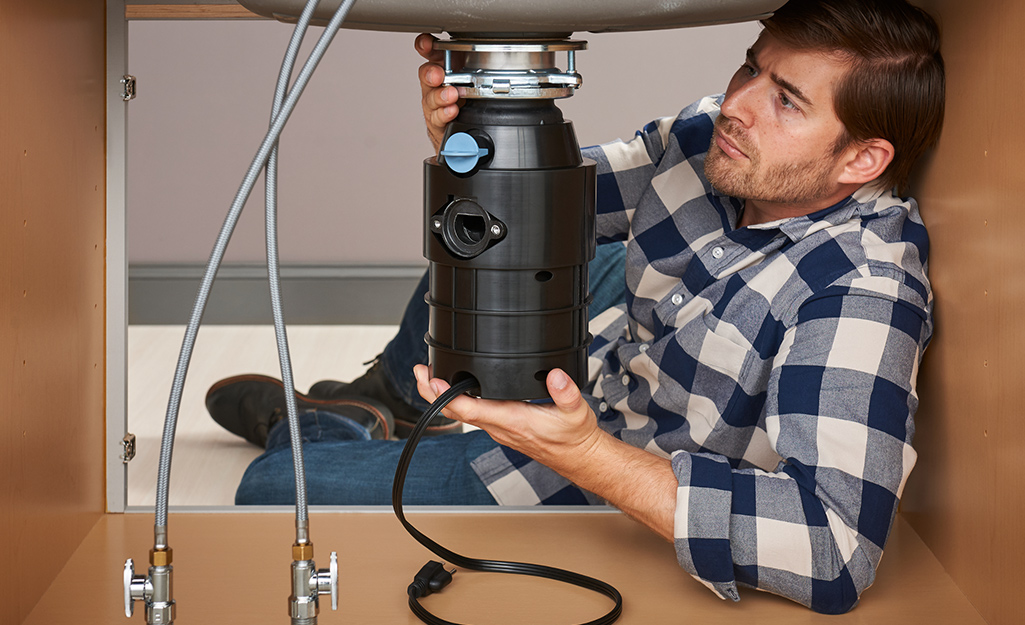Just how do you actually feel about Why Is ?

Waste disposal unit are essential kitchen area home appliances that aid in getting rid of food waste successfully. However, a leaking garbage disposal can be an irritating and unpleasant issue to take care of. Luckily, several leakages can be dealt with conveniently with a few basic actions. In this write-up, we will go over just how to take care of a dripping garbage disposal efficiently.
Intro
Garbage disposals are mounted under cooking area sinks and are created to shred food waste right into smaller items, permitting it to go through the pipes system easily. While these tools are typically trusted, leaks can occur gradually as a result of damage, loosened connections, or damage to the unit.
Step-by-Step Guide to Taking Care Of a Dripping Waste Disposal Unit
Shut off the Power
Prior to attempting any type of repair work, make sure that the power to the garbage disposal unit is turned off to avoid the danger of electric shock.
Situate the Leakage
Determine the exact area of the leakage and figure out the cause
Tighten up Links
Utilize a wrench to tighten any kind of loosened connections between the disposal system and the pipes system.
Change Seals or Gaskets
If the leakage results from worn seals or gaskets, eliminate the old elements and change them with brand-new ones.
Patching Splits or Openings
For splits or openings in the disposal device, usage epoxy or an ideal patching product to secure the broken location.
Recognizing the Resource of the Leak
Before attempting to take care of a leaking garbage disposal, it is necessary to identify the source of the leak. This can typically be done via visual assessment or by carrying out straightforward examinations.
Visual Evaluation
Check the waste disposal unit system very carefully for any type of signs of water leak. Pay very close attention to locations around seals, gaskets, and link points.
Checking for Leakages
One way to examine for leaks is by running water via the disposal unit and looking for any noticeable signs of leakage.
Usual Reasons For Leakages in Garbage Disposals
Worn Seals and Gaskets
Seals and gaskets play an essential duty in preventing water from leaking out of the waste disposal unit. Over time, these components can degrade, bring about leaks around the disposal unit.
Loose Connections
The links in between the waste disposal unit and the pipes system can come to be loose over time, causing water to leak out during operation.
Fractures or Holes in the Disposal System
Physical damage to the garbage disposal, such as splits or openings in the real estate, can likewise lead to leaks.
Tools and Materials Needed for Fixing a Leaking Waste Disposal Unit
Prior to starting the repair service process, gather the required tools and products, consisting of a screwdriver, adjustable wrench, plumbing's putty, replacement seals or gaskets, and epoxy or patching product for repairing cracks or openings.
Evaluating the Garbage Disposal After Repair
As soon as the repair work is full, check the garbage disposal by running water via it to guarantee that the leakage has been settled.
Preventive Maintenance Tips to Stay Clear Of Future Leaks
To stop future leaks, it is vital to carry out routine maintenance on your garbage disposal. This consists of keeping it tidy, staying clear of placing non-food items or difficult things down the disposal, and periodically checking for leakages or various other issues.
Final thought
To conclude, dealing with a leaking garbage disposal is a fairly simple process that can be completed with basic tools and materials. By following the steps described in this short article and practicing precautionary maintenance, you can keep your waste disposal unit in good working problem and prevent expensive repair work in the future.
What to Do About a Leaking Garbage Disposal
A leaking garbage disposal often goes unnoticed until you confront a sopping cabinet, a foul-smelling puddle, or an audible drip-drip-drip from the unit. The fix can be frustrating, too, because the leak can stem from a number of components in the system. Fortunately, with a little sleuthing, you can zero in on the leak and—depending on the exact location—stop the icky oozing and repair the component that caused it. Worst case scenario, if it turns out that the garbage disposal must be replaced, installing a new one is a reasonable do-it-yourself task for those with basic plumbing skills. Read on to keep the cash you’d otherwise hand over to a pro.
Prepare to find the leak
Prior to testing the garbage disposal for leaks, unplug it at the wall outlet and turn off the power from the breaker box to prevent electrical shock. Then insert a watertight sink stopper into your sink drain and wipe the unit dry with a clean cloth. In any handy container, mix a few drops of food coloring into a few cups of water, and pour the dyed water onto the sink stopper to help you locate the leak.
Investigate the source
the top, where the disposal meets the sink drain the side, where the dishwasher hose or main drain pipe connects to the disposal or the bottom of the unit Inspect each of these locations while gliding a light-colored rag over the unit; the dyed water will readily show on the rag and reveal the location of the leak. If a leak isn’t immediately apparent, remove the sink stopper and pour a few more cups of dyed water down the sink drain, then check for leaks again. Leaks near the top of the unit are more likely to show themselves while the sink is plugged, while side and bottom leaks are more noticeable while the sink is unplugged.
The metal sink flange that sits directly inside the sink drain is typically sealed around the top with plumber’s putty (a clay-like sealant) and then secured from under the sink with bolts. If the plumber’s putty deteriorates, or the bolts loosen, the flange can no longer form a watertight seal between the sink drain and the disposal—which could cause a leak at the top of the unit.
To reseal the leaky flange, you must first detach the garbage disposal. Start by loosening the screws securing the main drain pipe to the disposal, then loosen the screws in the metal clamp securing the dishwasher hose to the disposal and detach the drain pipe and dishwasher hose from the disposal. Loosen the screws in the mounting ring that connects the disposal to the metal mounting assembly beneath the sink, then pull down the disposal and carefully set it on a clean, dry surface. Loosen the bolts in the mounting assembly with a wrench, then pull down the mounting assembly and set it near the disposal.

I ran across that write up on How to fix a pretty consistent leak from my garbage disposal while doing a lookup on the web. Liked our blog entry? Please share it. Let others find it. We appreciate reading our article about Garbage Disposal Leaking From Bottom.
This Website